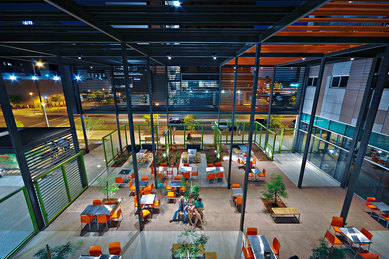Student Life
The Examined Life: Creating Campus Buildings That Enhance Student Life
When designing centers for student use, it is no longer enough to include a food court and a computer lab. Today's students are more tech-savvy, more connected and more collaborative than ever, and use their time in fundamentally different ways than students of the 20th century. They also display higher levels of social engagement and responsibility. If they had a manifesto, it might well be Socrates' “The unexamined life is not worth living," and they live this mantra as they update their profile status, choose free-time activities, and decide where to study or eat. Unsurprisingly, these students expect their colleges and universities to mirror and enable such traits on campus.
One of the most immediate ways that universities can accommodate the new student body is to give it the right kind of home. Examining the purpose, structure and end-use of residence halls and student centers, in our experience, makes all the difference when it comes to students' relationship with their university.
How, then, can buildings capitalize on this change to allow for connections and increased learning? How can architecture adapt to the needs and changes in technology? We've assembled a few case studies that demonstrate how good design and construction can improve students' lives, enable their increased connectivity, and support new styles of learning and engagement.
